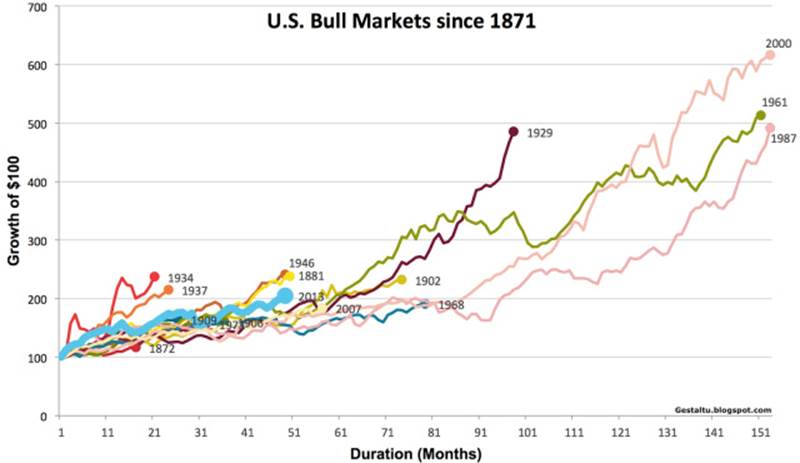https://www.sec.gov/Archives/edgar/data/1527428/000158064217003629/arrowcommodity_497e.htm497 1 arrowcommodity_497e.htm 497
ARROW COMMODITY STRATEGY FUND
CLASS A SHARES: CSFFX
CLASS C SHARES: CSFTX
INSTITUTIONAL CLASS SHARES: CSFNX
(a series of Arrow Investments Trust)
Supplement dated June 27, 2017 to
the Summary Prospectus, Prospectus and Statement of Additional Information dated December 1, 2016
The Board of Trustees of Arrow Investments Trust (the “Board”) has determined, based on the recommendation of the Fund’s adviser, that, with respect to the Arrow Commodity Strategy Fund (the “Fund”), a series of the Arrow Investments Trust, it is in the best interests of the Fund and its shareholders that the Fund cease operations. The Board has determined to close the Fund and redeem all outstanding shares on July 28, 2017.
Effective June 28, 2017, the Fund will not accept any purchases and will no longer pursue its stated investment objective. The Fund may begin liquidating its portfolio and may invest in cash equivalents such as money market funds until all shares have been redeemed. Any
capital gains will be distributed as soon as practicable to shareholders. Shares of the Fund are otherwise not available for purchase.
After June 28, 2017 and prior to July 28, 2017, you may redeem your shares, including reinvested distributions, in accordance with the “How to Redeem Shares” section in the Prospectus. No redemption fee or contingent deferred sales load will be charged on any redemption or exchange. Unless your investment in the Fund is through a tax-deferred retirement account, a redemption is subject to tax on any taxable
gains. Please refer to the “Tax Status, Dividends and Distributions” section in the Prospectus for general information. You may wish to consult your tax advisor about your particular situation.
Arrow Investment Advisors, LLC, the Fund’s investment adviser, serves as investment adviser to several other mutual funds in the Trust. As discussed in the Fund’s prospectus, you may exchange your Fund shares for shares of the same Class of another fund in the fund complex advised by Arrow Investment Advisors, LLC (an “Arrow Fund”). Exchanges are made at net asset value. Except as stated herein, exchanges are subject to the terms applicable to purchases of an Arrow Fund’s shares as set forth in the applicable fund’s prospectus. An exchange of Fund shares to another Arrow Fund will be treated as a sale for federal income tax purposes.
ANY SHAREHOLDERS WHO HAVE NOT REDEEMED THEIR SHARES OF THE FUND PRIOR TO JULY 28, 2017 WILL HAVE THEIR SHARES AUTOMATICALLY REDEEMED AS OF THAT DATE, AND PROCEEDS WILL BE SENT TO THE ADDRESS OF RECORD. IF YOU HAVE QUESTIONS OR NEED ASSISTANCE, PLEASE CONTACT YOUR FINANCIAL ADVISOR DIRECTLY OR THE FUNDS AT 1-877-277-6933.
IMPORTANT INFORMATION FOR RETIREMENT PLAN INVESTORS
If you are a retirement plan investor, you should consult your tax advisor regarding the consequences of a redemption of Fund shares. If you receive a distribution from an Individual Retirement Account or a Simplified Employee Pension (SEP) IRA, you must roll the proceeds into another Individual Retirement Account within sixty (60) days of the date of the distribution in order to avoid having to include the distribution in your taxable income for the year. If you receive a distribution from a 403(b)(7) Custodian Account (Tax-Sheltered account) or a Keogh Account, you must roll the distribution into a similar type of retirement plan within sixty (60) days in order to avoid disqualification of your plan and the severe tax consequences that it can bring. If you are the trustee of a Qualified Retirement Plan, you may reinvest the money in any way permitted by the plan and trust agreement.
This Supplement and the existing Summary Prospectus, Prospectus, and Statement of Additional Information dated December 1, 2016, provide relevant information for all shareholders and should be retained for future reference. The Summary Prospectus, Prospectus, and Statement of Additional Information dated December 1, 2016, have been filed with the Securities and Exchange Commission, are incorporated by reference and can be obtained without charge by calling the Fund at 1-877-277-6933.

